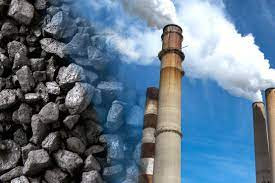
WHEN electricity is generated, it is essential that sources of carbon emission are managed so that the processes do not further damage the planet.
Therefore, reducing emissions from electricity generation and transport systems is paramount in solving climate-related problems.
It is in the interest of clean energy development that the processes of generating electricity are efficient and able to lower carbon alternatives to fossil fuels and even remove greenhouse gasses from the atmosphere.
As the global energy requirements increase, it is important to check if the methods used to generate power can deliver lifesaving solutions to runaway carbon emissions by increasing energy efficiencies while regulating energy waste.
The methods are called technological solutions because they help to reduce greenhouse gas emissions and they include renewable energy pathways like solar, wind and hydropower, including geothermal energy, tidal and wave power, among others.
As the world grapples with global warming, the aim of technological solutions is to regulate future fossil fuels.
Now that fossil fuels remain key to the global energy supplies; can we say the world is ready to abandon fossil fuel burning? Why is it difficult for the world to transit to low carbon economies if they can deliver the solutions that are always talked about? Why are multinationals refusing to let go of fossil fuels if renewable technologies are simple, cheaper and transformative? Who does not want a cheaper, smart and clean environment not poisoned and toxic. While fossil fuels are a finite resource, the world is investing in a fossil fuel rush like there have never been global warming before.
Developing countries are also having negative carbon footprints in fossil fuel explorations making new discoveries of oil, gas and coal. The widely talked about green technologies appear to have been reserved for rhetoric and communication, massaging and hoodwinking the people while the real deal continues.
Coal power plants have refused to go while new ones are emerging, and people are hearing of what is referred to as clean coal and gas. The paradox of technological solutions not adding up to desired solutions anymore. About two-thirds of the world’s electricity generation still comes from coal-fired plants and coal remains a source of more than a quarter of global carbon dioxide emissions. Evidence on the ground still points towards coal as a fossil of choice in Zimbabwe, South Africa, India, Botswana, China, US, Australia, Germany, Russia, Colombia, Mozambique, among other countries.
Very soon, end of February 2024, many countries will gather in Zimbabwe for the International Conference on Renewable Energy in Bulawayo and Kariba. Very important gatherings where delegates will be talking more of what they are able to do than what they are currently doing.
Another worrying scenario is where big multinationals do not seem to be cutting down on fossil fuels but have gone to the extent of investing in green technological solutions while they continue to pollute. They are polluters and reformers at the same time and their fossil fuel burning is also a key driver of climate change. These multinationals will never talk of mandatory emission cuts as this hurts their profits hence, from their point of view, it is necessary for humanity and the environment to suffer instead.
Something that audiences have not been told is that on solar energy it is only the sunshine that is readily available and cheap while the solar cells on the panels are not cheap. As such, it will take some time for solar power to revolutionise the electricity landscape because the solar products like the grids are not cheap at all. Of course, it is true that solar power is smart and clean, it does not support carbon emissions but solar products like batteries, inverters and pumps are expensive.
That is why very few people and organisations are enjoying the benefits of solar energy and the rest is environmental propaganda and marketing gimmick. If solar energy was that cheap and accessible, then the rest of Africa with abundant supplies of sunshine would not be wallowing in energy poverty.
Wind power is another technological solution contributing a significant chunk of renewable energy. Wind turbines produce no greenhouse gas emissions at all and they are situated far away from the ground hence the environment is kept safe and intact. Wind, just like sunshine, is sometimes readily available and cheaper too. Wind is also context-specific as some countries have more wind potential and farms than others.
Geothermal power is geographical specific, it is not found everywhere like sunshine and wind. Geothermal power taps into the hot water produced where rain and snow melt and percolate under the ground to form pools that are heated by adjacent magma and hot rocks. Some of the geothermal power plants can draw hot water and steam from a distance underground. In Africa, Kenya and Ethiopia while globally Iceland, Philippines and El-Salvador are on the geothermal landscape. Geothermal power generation does not allow much carbon to escape into the atmosphere.
Hydroelectric power generation is the most used and it produces more energy where water is available, and Kariba hydroelectric power station is a case in point. As a result, as electricity is produced there are minimal greenhouse gas emissions realised. The other small-scale hydroelectric power suppliers in Zimbabwe are Hauna, Pungwe and Duru in Manicaland, all powered by Nyangani Renewable Energy (Pvt) Limited.
The problem with hydroelectric power generation has largely to do with operational costs, including the cost of construction of the dams which can affect other water bodies and ecosystems. The establishment of large dams can also displace nearby communities thereby rendering them home and landless through forced relocations.
Other much talked about technological solutions are intentions to make transport greener. Transporting people and goods by road, sea and air contributes about a quarter of global carbon emissions. Therefore, that is why calls for lower emission vehicles are growing louder as some would be electric or solar powered. In the era of climate change and dwindling natural resources, traditional fossil fuel vehicles are being phased out elsewhere because they are not eco-friendly.
Zimbabwe is blessed with ethanol which can be blended with petrol to regulate carbon emissions and greenhouse gases. Biodiesel is also another substance with sufficient environmental advantages hence it has a marked advantage over ethanol.
Finally, the envisaged technological solutions are designed to lower carbon emissions, improve energy efficiency and reduce energy waste, go green, smart and sustainable, save the environment, lives and cut costs.






